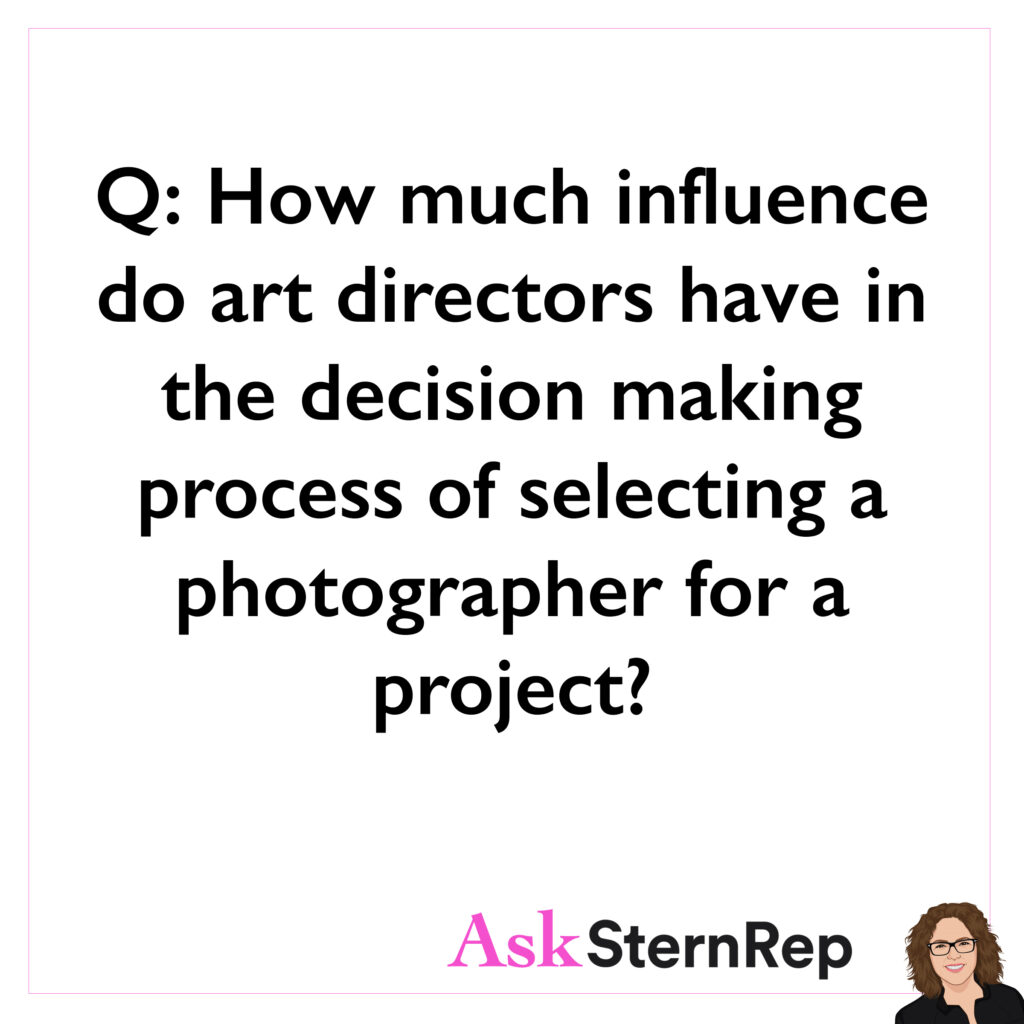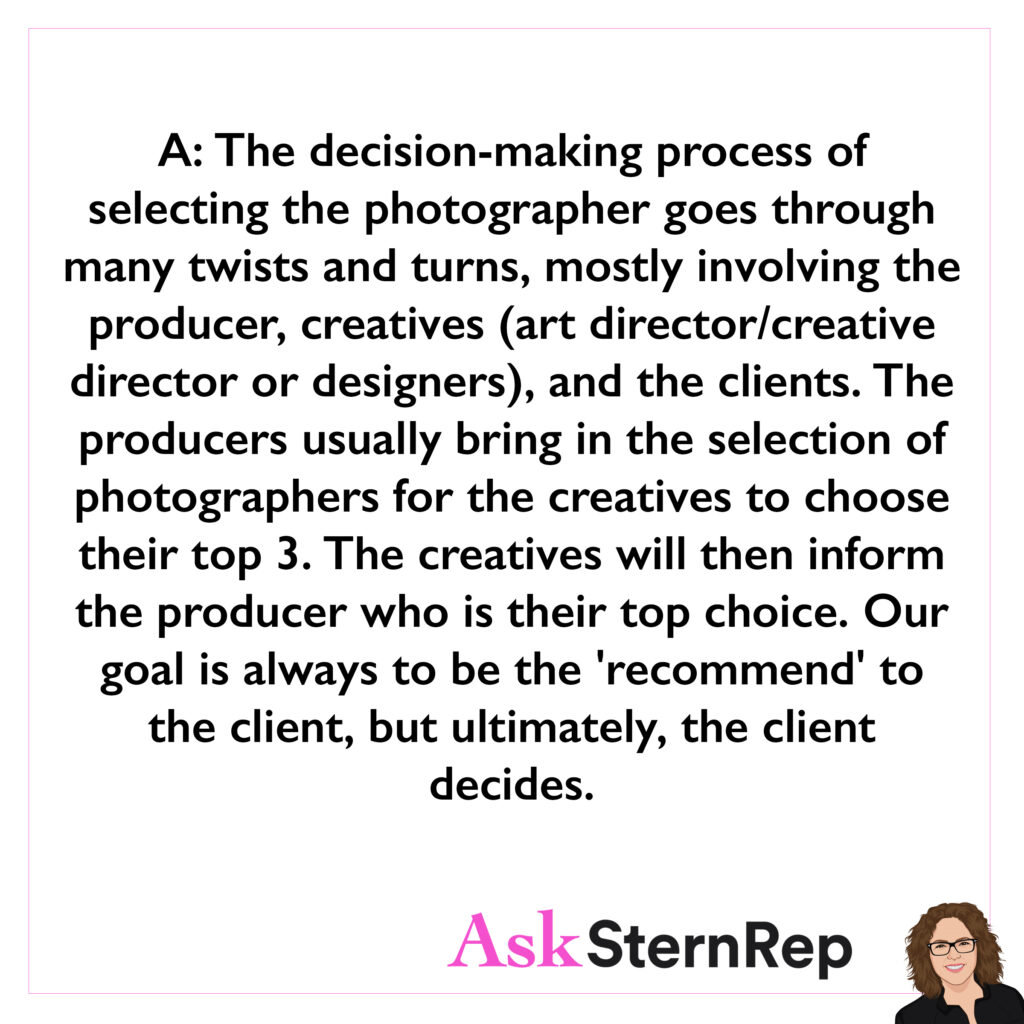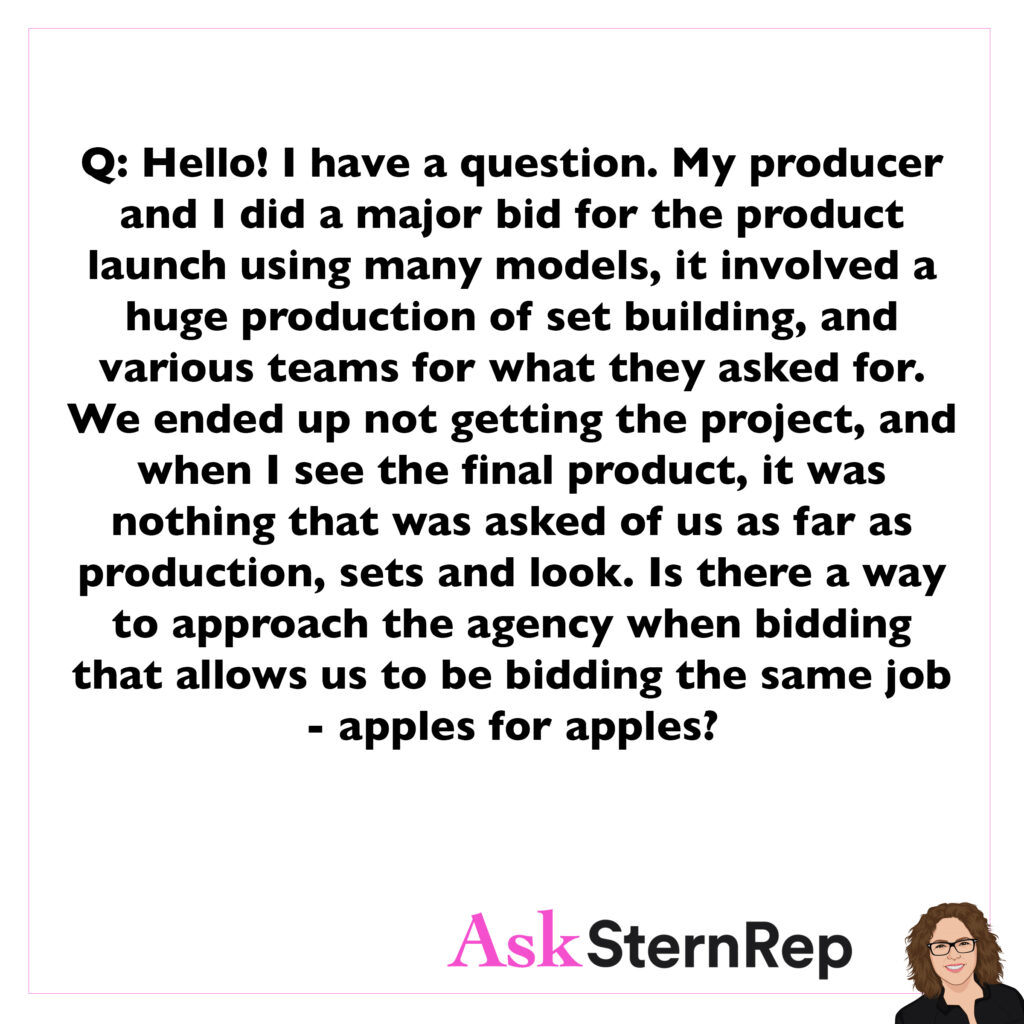Bidding on a project without a shot list means you cannot know the exact costs for expenses, and you will be concepting the creative shot list. When you are wearing more hats, you need to charge for your time and call it a CREATIVE CONCEPTING FEE.
Bidding Process
The Decision is Yours
When bidding on a job, you are in the position to make an educated decision to be the “bank” running all the costs through your own company vs having it go through the producer. Any markup or differences in actual prices will be a profit to whoever gets paid for the job. This can be you if you want to handle your billing. The decision is yours.
When you’re asked to bid on a job and choose a producer to work with, it’s important to make an educated decision about billing. Many producers handle all the costs and serve as the financial intermediary, and this is also common among reps. However, this isn’t how I operate, so I can’t speak from that perspective.
You need to decide whether you want the money to go through your name, directly through the producer, or through the rep. This decision should be made and clarified beforehand. If you choose to handle billing yourself, keep in mind that there could be a markup and leftover money from production expenses that could potentially benefit the producer.
Some photographers prefer to manage their own billing to avoid the markup and keep more of the budget, but this might limit your opportunities to work with certain producers. It’s worth considering how many producers would be willing to work under these terms. Ultimately, it’s your decision and you should carefully weigh your options.
This is a Presentation
Make sure to use your words wisely and get into good routines to share your ideas on client calls. If you find yourself needing a traditional phrase to finish your zoned-in thoughts, get them ready and mix them up. Saying a phrase more than once will weaken your “director” presentation, and remember, this is a presentation.
Decision Making of Selecting a Photographer


Q:
How much influence do art directors have in the decision making process of selecting a photographer for a project?
A:
The decision-making process of selecting the photographer goes through many twists and turns, mostly involving the producer, creatives (art director/creative directors or designers), and the clients. The producers usually bring in the selection of photographers for the creatives to choose their top 3. The creatives will then inform the producer who is their top choice. Our goal is always to be the ‘recommend’ to the client, but ultimately, the client decides.
Be the Director
Throughout the bidding process consistently put your ideas on the table and take the lead. Be the director the whole way through!
When you’re bidding on a job, it’s not just about figuring out what the client wants; it’s also about stepping up as the director and leading the project. You need to explain your solutions and ideas. Even after you’ve submitted your bid, continue to reinforce your value by coming back with more ideas. Show them that you’re the professional who can provide creative solutions and help them make informed decisions.
It reminds me of the Seinfeld episode where he’s getting his kitchen built, and the builder offers no opinions of his own. It’s frustrating because clients need to know that having more opinions and ideas demonstrates your capability as a director. That’s what they’re hiring you for.
Project Minimum


Q:
Hi Andrea! I have a question regarding one-sheets that maybe might be helpful for the community. Would you suggest including a project minimum? I’ve been getting a lot of requests for “rate cards” and I usually say it’s project dependent.
A:
Photographer’s rates depend on the type of work you do. If you can simplify this request with a rate card, it would save you time. My goal as the agent is to save time by quickly finding out if we should continue this conversation by quoting a price range. I’ll say, “Our day rate fee for this would usually be somewhere between 4,000 – 10,000, depending on many factors like shot count, shot list, day count, the creative component of the images, and what the licensed usage rights are. What is your budget?” I find a price range to be the fastest way to get to the next step.
Major Bid + Huge Production


Q:
Hello! I have a question. My producer and I did a major bid for the product launch using many models, it involved a huge production of set building, and various teams for what they asked for. We ended up not getting the project, it was nothing that was asked of us as far as production, sets and look. Is there a way to approach the agency when bidding that allows us to be bidding the same job – apples for apples?
A:
While we can’t predict or control the bidding process, we can ask every question to help us understand the production details. The key is to have an A+ producer and make sure you get on a creative call, as that is where we get our answers. The purpose of three-way bidding is to protect clients in a fair apple to apple comparison, so they are not overpaying. Our goal is to protect ourselves by understanding all the information, even when we may have to dig around to get that info.
Don’t Hold Back in Stating Your Case
Clients don’t always have all the facts when we are bidding a job, leading us to under-bid certain areas. If more responsibility falls into your lap than expected, don’t hold back in stating your case to request more $. Clients know that some gray areas may result in an overage, but they need us to be the ones to ask for it.
Sometimes we bid on projects where we don’t have all the information yet, and the client may not have all the details either, leading to many assumptions. We should include “TBD” (to be determined) on those line items in our bid to protect ourselves. Even if we don’t include them, once the job is awarded and more responsibilities shift to us that were initially thought to be handled by the client, don’t hesitate to ask for additional funds. Address any new needs or changes directly with the client—don’t get frustrated. Often, they will understand because the situation was unknown at the time. Request more prep days, additional tech scout days if needed, extra post time, or anything else necessary. Remember, just because the bid is awarded doesn’t mean you have to absorb these changes without discussing them.
When Choosing a Producer
Make an educated choice when choosing a producer to help you bid a job. Be aware that some charge a 10% production fee on the expenses and some don’t. Some do waive that fee if you ask, so know that you do have options.
When you are bidding for a job you have to ask yourself if you need a producer and if so, which producer do you need? There’s a new element to our decision, it’s called a production fee. It used to be called a markup fee and then ad agencies did not want to pay that fee. Now it’s called a production fee. What we’re paying for is 10% of the production expenses that gets paid to the producer. They want to be covered for giving their employees health insurance and other expenses to keep their business going. It’s a new concept and some producers don’t charge it, but some do. Think about that and ask that question when you are choosing your producer.
Creative Calls: What You Need to Deliver
What you need to deliver in the creative video call to get the job:
- Enthusiasm
- Unexpected Bonus Ideas
- Throw in a relevant comment or two to reinforce your specialty, which has you on their shortlist for this project
When asked to bid on a job you’ll probably have a creative call. This is more important than ever because it’s video. It used to be a phone call and it wasn’t as personable. They didn’t really get a sense of you as much. Now it really weighs in on their decision who they are going to choose for the job. You have to have your enthusiasm to show your excitement for this job because they’re handing it over to you. They want to know who you are going to be on their set. Once you get the creative deck which is the mood board and the shot list, think about technical ideas because that’s your place in this. What are you going to bring to the job? They want to hear from you. Why exactly did they choose you for this bid? Think about that one thing that separates you and is unique to you for this job. Fit it into the conversation and have a question in mind or a thought, something you’re going to say about a shot that you can relate to and you know that is why they brought you in on this.
